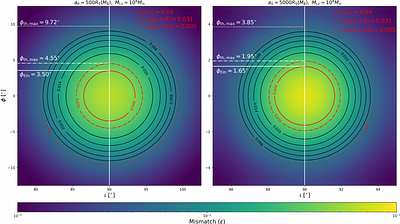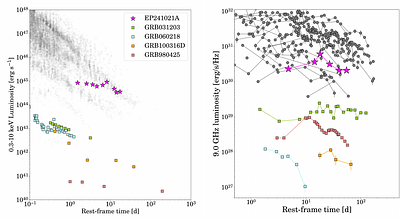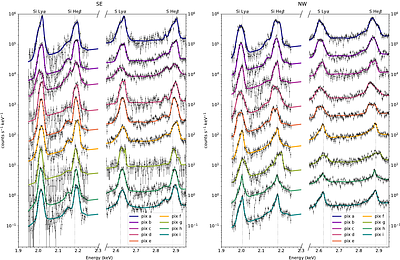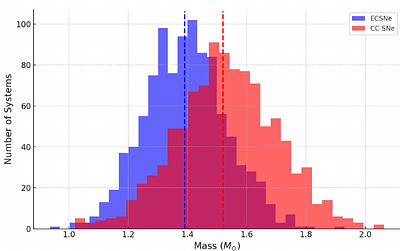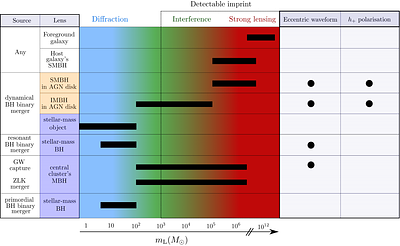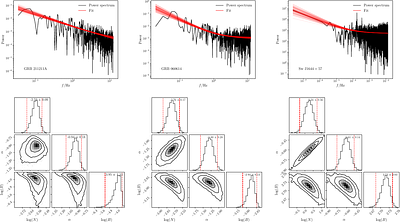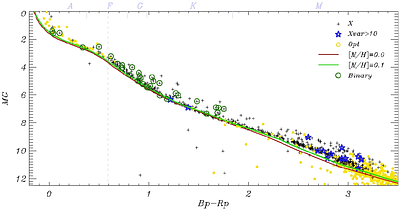By: Wen-Long Xu, Yu-Zhe Li, Yi-Gu Chen, Hui Li, Wei-Hua Lei
By: Amitesh Singh, Nathan K. Johnson-McDaniel, Anuradha Gupta, Khun Sang Phukon
By: Shilpa Sarkar, I. M. Kulikov
By: K. Perger, S. Frey, K. É. Gabányi, E. Kun
By: Giulia Gianfagna, Luigi Piro, Gabriele Bruni, Aishwarya Linesh Thakur, Hendrik Van Eerten, Alberto Castro-Tirado, Yong Chen, Ye-hao Cheng, Han He, Shumei Jia, Zhixing Ling, Elisabetta Maiorano, Rosita Paladino, Roberta Tripodi, Andrea Rossi, Shuaikang Yang, Jianghui Yuan, Weimin Yuan, Chen Zhang
By: Jacco Vink Anton Pannekoek Institute/GRAPPA, University of Amsterdam, Netherlands SRON Netherlands Institute for Space Research, Leiden, Netherlands, Manan Agarwal Anton Pannekoek Institute/GRAPPA, University of Amsterdam, Netherlands, Aya Bamba Department of Physics, Graduate School of Science, The University of Tokyo, Japan Research Center for the Early Universe, School of Science, The University of Tokyo, Japan Trans-Scale Quantum Science Institute, The University of Tokyo, Japan, Liyi Gu SRON Netherlands Institute for Space Research, Leiden, Netherlands, Paul Plucinsky Harvard-Smithsonian Center for Astrophysics, Cambridge MA, USA, Ehud Behar Department of Physics, Technion, Technion City, Haifa, Israel, Lia Corrales Department of Astronomy, University of Michigan, USA, Adam Foster Harvard-Smithsonian Center for Astrophysics, Cambridge MA, USA, Shin-ichiro Fujimoto National Institute of Technology Kumamoto College, Kumamoto, Japan, Masahiro Ichihashi Department of Physics, Graduate School of Science, The University of Tokyo, Japan, Kazuhiro Ichikawa Faculty of Engineering, University of Miyazaki, Miyazaki, Japan, Satoru Katsuda Graduate School of Science and Engineering, Saitama University, Saitama, Japan, Hironori Matsumoto Department of Earth and Space Science, Osaka University, Osaka, Japan, Kai Matsunaga Department of Physics, Kyoto University, Kyoto, Japan, Tsunefumi Mizuno Department of Physics, Hiroshima University, Hiroshima, Japan, Koji Mori Faculty of Engineering, University of Miyazaki, Miyazaki, Japan, Hiroshi Murakami Department of Data Science, Tohoku Gakuin University, Miyagi, Japan, Hiroshi Nakajima College of Science and Engineering, Kanto Gakuin University, Kanagawa, Japan, Toshiki Sato School of Science and Technology, Meiji University, Kanagawa, Japan, Makoto Sawada Department of Physics, Rikkyo University, Tokyo, Japan, Haruto Sonoda ISAS/JAXA, Sagamihara, Kanagawa, Japan, Shunsuke Suzuki ISAS/JAXA, Sagamihara, Kanagawa, Japan, Dai Tateishi Department of Physics, Graduate School of Science, The University of Tokyo, Japan Present address: Collaborative Laboratories for Advanced Decommissioning Science, Japan Atomic Energy Agency, Fukushima, Japan, Yukikatsu Terada Graduate School of Science and Engineering, Saitama University, Saitama, Japan ISAS/JAXA, Sagamihara, Kanagawa, Japan, Hiroyuki Uchida Department of Physics, Kyoto University, Kyoto, Japan
By: W. V. Jacobson-Galán, L. Dessart, K. W. Davis, K. A. Bostroem, C. D. Kilpatrick, R. Margutti, A. V. Filippenko, R. J. Foley, R. Chornock, G. Terreran, D. Hiramatsu, M. Newsome, E. Padilla Gonzalez, C. Pellegrino, D. A. Howell, J. P. Anderson, C. R. Angus, K. Auchettl, T. G. Brink, R. Cartier, D. A. Coulter, T. de Boer, M. R. Drout, N. Earl, K. Ertini, J. R. Farah, D. Farias, C. Gall, H. Gao, M. A. Gerlach, F. Guo, A. Haynie, G. Hosseinzadeh, A. L. Ibik, S. W. Jha, D. O. Jones, D. Langeroodi, N LeBaron, E. A. Magnier, A. L. Piro, S. I. Raimundo, A. Rest, S. Rest, R. Michael Rich, C. Rojas-Bravo, H. Sears, K. Taggart, V. A. Villar, R. J. Wainscoat, X-F. Wang, A. R. Wasserman, S. Yan, Y. Yang, J. Zhang, W. Zheng
By: Ian Holst, Yoann Génolini, Pasquale Dario Serpico
Exploring the Formation Mechanisms of Double Neutron Star Systems: An Analytical Perspective
By: Ali Taani, Mohammed Abu-Saleem, Mohammad Mardini, Hussam Aljboor, Mohammad Tayem
By: I. A. Mereminskiy IKI RAS, Moscow, Russia, A. S. Gorban IKI RAS, Moscow, Russia HSE University, Moscow, Russia, Yu. S. Klein HSE University, Moscow, Russia IKI RAS, Moscow, Russia, E. A. Ushakova HSE University, Moscow, Russia IKI RAS, Moscow, Russia, A. N. Semena IKI RAS, Moscow, Russia, A. A. Lutovinov IKI RAS, Moscow, Russia, A. Yu. Tkachenko IKI RAS, Moscow, Russia, S. V. Molkov IKI RAS, Moscow, Russia
By: Helena Ubach, Mark Gieles, Jordi Miralda-Escudé
Variabilities of Gamma-ray Bursts from the Dynamics of Fallback Material after Tidal Disruption
By: Yun-Peng Li, Da-Bin Lin, Guo-Yu Li, Zi-Min Zhou, En-Wei Liang
By: I. M. Khamitov, I. F. Bikmaev, M. R. Gilfanov, R. A. Sunyaev, P. S. Medvedev
By: Yaowei Li, Lin Wang, Lei Qian, Liyun Zhang, Yujie Chen, Dejiang Yin, Baoda Li, Yinfeng Dai, Ralph P. Eatough, Wenze Li, Dongyue Jiang, Xingnan Zhang, Minghui Li, Yujie Lian, Yuxiao Wu, Tong Liu, Kuo Liu, Zhichen Pan
